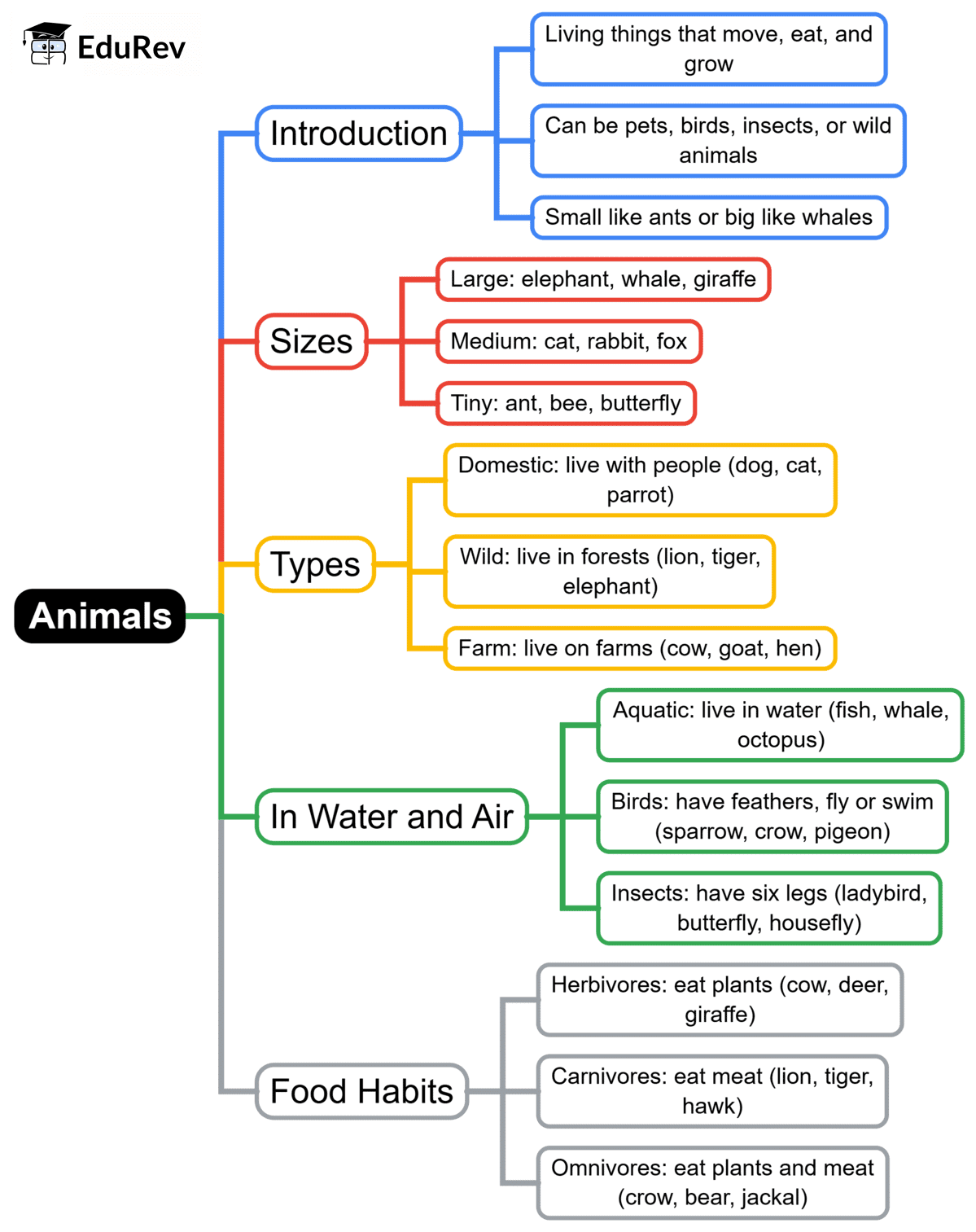Class 2 Exam > Class 2 Notes > EVS for Class 2 > Mind Map: Animals
Mind Map: Animals | EVS for Class 2 PDF Download

The document Mind Map: Animals | EVS for Class 2 is a part of the Class 2 Course EVS for Class 2.
All you need of Class 2 at this link: Class 2
|
29 videos|304 docs|48 tests
|
FAQs on Mind Map: Animals - EVS for Class 2
| 1. What are the main classifications of animals ? |  |
Ans.Animals can be classified into various groups based on their characteristics. The primary classifications include vertebrates (animals with a backbone, such as mammals, birds, reptiles, amphibians, and fish) and invertebrates (animals without a backbone, such as insects, arachnids, mollusks, and crustaceans). This classification helps in studying their biology, behavior, and ecology.
| 2. How do animals adapt to their environments ? |  |
Ans.Animals adapt to their environments through various physical and behavioral changes over time. These adaptations can include camouflage, changes in body size or shape, and alterations in reproductive strategies. For example, some animals develop thicker fur for colder climates, while others may have specialized limbs for swimming or climbing, allowing them to thrive in their specific habitats.
| 3. What role do animals play in ecosystems ? |  |
Ans.Animals play crucial roles in ecosystems as they contribute to various ecological functions. They can be predators, prey, scavengers, or pollinators, helping to maintain the balance of populations within an ecosystem. For instance, predators control the numbers of herbivores, while pollinators facilitate plant reproduction, which is essential for food production and habitat stability.
| 4. What are the major threats to animal populations today ? |  |
Ans.Major threats to animal populations include habitat destruction, climate change, pollution, overexploitation, and invasive species. Habitat destruction due to urbanization and agriculture leads to loss of shelter and food sources. Climate change alters habitats and food availability, while pollution can harm animal health. Overexploitation through hunting and fishing can deplete populations, and invasive species can disrupt local ecosystems.
| 5. How do scientists study animal behavior ? |  |
Ans.Scientists study animal behavior using various methods such as direct observation, experiments, and the use of technology. They may observe animals in their natural habitats or controlled environments to gather data on their behaviors. Technologies like GPS tracking and video recording help researchers analyze movement patterns and social interactions, providing insights into how animals communicate, mate, and care for their young.
Related Searches
















